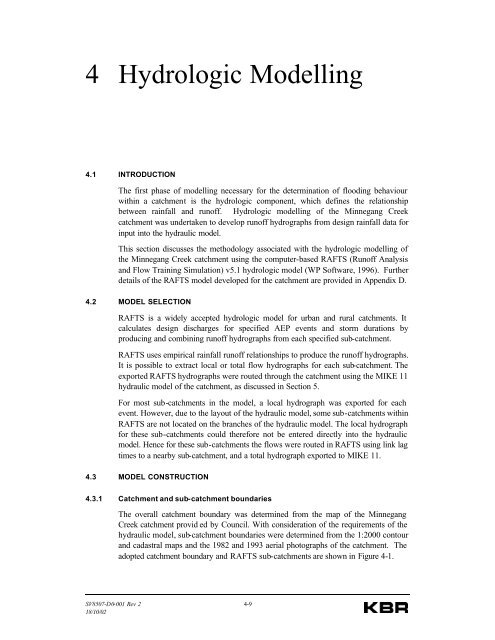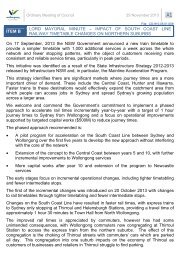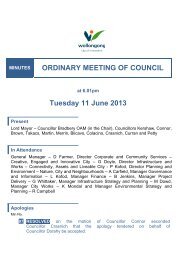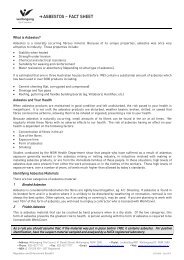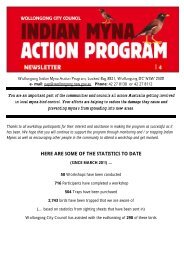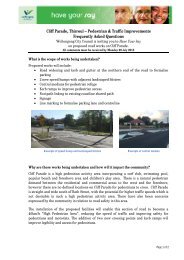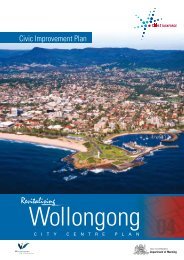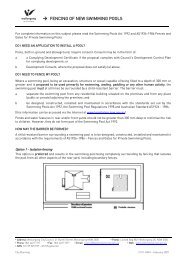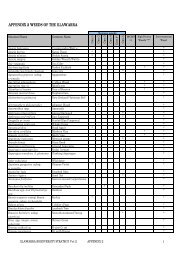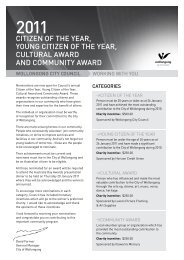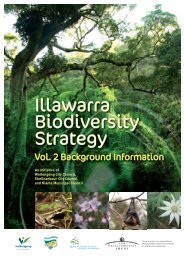Minnegang Creek Flood Study Report - Wollongong City Council
Minnegang Creek Flood Study Report - Wollongong City Council
Minnegang Creek Flood Study Report - Wollongong City Council
- No tags were found...
You also want an ePaper? Increase the reach of your titles
YUMPU automatically turns print PDFs into web optimized ePapers that Google loves.
4 Hydrologic Modelling4.1 INTRODUCTIONThe first phase of modelling necessary for the determination of flooding behaviourwithin a catchment is the hydrologic component, which defines the relationshipbetween rainfall and runoff. Hydrologic modelling of the <strong>Minnegang</strong> <strong>Creek</strong>catchment was undertaken to develop runoff hydrographs from design rainfall data forinput into the hydraulic model.This section discusses the methodology associated with the hydrologic modelling ofthe <strong>Minnegang</strong> <strong>Creek</strong> catchment using the computer-based RAFTS (Runoff Analysisand Flow Training Simulation) v5.1 hydrologic model (WP Software, 1996). Furtherdetails of the RAFTS model developed for the catchment are provided in Appendix D.4.2 MODEL SELECTIONRAFTS is a widely accepted hydrologic model for urban and rural catchments. Itcalculates design discharges for specified AEP events and storm durations byproducing and combining runoff hydrographs from each specified sub-catchment.RAFTS uses empirical rainfall runoff relationships to produce the runoff hydrographs.It is possible to extract local or total flow hydrographs for each sub-catchment. Theexported RAFTS hydrographs were routed through the catchment using the MIKE 11hydraulic model of the catchment, as discussed in Section 5.For most sub-catchments in the model, a local hydrograph was exported for eachevent. However, due to the layout of the hydraulic model, some sub-catchments withinRAFTS are not located on the branches of the hydraulic model. The local hydrographfor these sub-catchments could therefore not be entered directly into the hydraulicmodel. Hence for these sub-catchments the flows were routed in RAFTS using link lagtimes to a nearby sub-catchment, and a total hydrograph exported to MIKE 11.4.3 MODEL CONSTRUCTION4.3.1 Catchment and sub-catchment boundariesThe overall catchment boundary was determined from the map of the <strong>Minnegang</strong><strong>Creek</strong> catchment provid ed by <strong>Council</strong>. With consideration of the requirements of thehydraulic model, sub-catchment boundaries were determined from the 1:2000 contourand cadastral maps and the 1982 and 1993 aerial photographs of the catchment. Theadopted catchment boundary and RAFTS sub-catchments are shown in Figure 4-1.SV8507-D0-001 Rev 2 4-918/10/02


